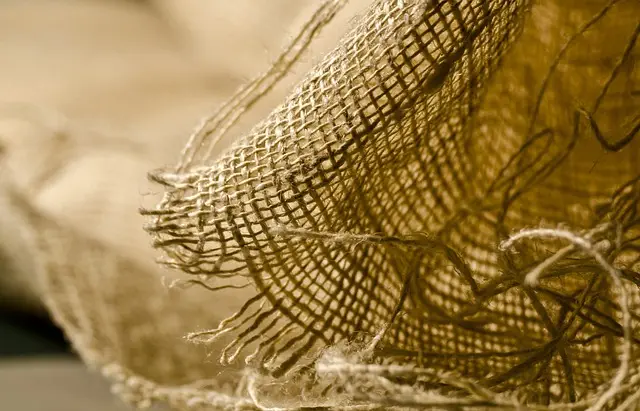To successfully grow Black Maeng Da Kratom (Mitragyna speciosa) outdoors, it's essential to replicate its Southeast Asian climate with warm, humid conditions and moderate rainfall, similar to its native Thailand. The ideal temperature range is between 75°F and 85°F during the day and slightly cooler at night. Soil should be well-draining and rich in organic matter to emulate the forest floor environment of its natural habitat. Gardeners must vigilantly monitor for pests and diseases, prune for better branching, and space plants adequately for optimal growth. Outdoor cultivation requires careful management of sunlight, humidity, and watering to preserve the plant's unique alkaloid composition, which is affected by timing the harvest just right to achieve peak potency. Post-harvest, drying and grinding must be done under controlled conditions to maintain the integrity of the active compounds, with a strong emphasis on hygiene and sanitation throughout the process to ensure consumer safety and product efficacy. By adhering to these specific conditions and practices, outdoor cultivation can yield high-quality Black Maeng Da Kratom that meets users' expectations for its effects, emphasizing the importance of environmental synchrony for successful kratom growing outdoors. Keyword: growing kratom outdoors.
Discover the intricacies of outdoor cultivation for Black Maeng Da Kratom, a strain renowned in the realm of herbal botany. This article serves as a guide to master the unique requirements and characteristics of growing this potent plant. Learn essential practices for ensuring the potency and quality of your harvest directly from your garden. Whether you’re an experienced gardener or a curious enthusiast, delve into the world of cultivating Black Maeng Da Kratom outdoors for insights on maintaining optimal conditions that guarantee a high-quality yield.
- Mastering the Art of Growing Black Maeng Da Kratom Outdoors: A Comprehensive Guide to Cultivating the Strain
- Understanding the Unique Characteristics and Care Requirements of Black Maeng Da Kratom Plants in an Outdoor Setting
- Harvesting and Post-Harvest Processing: Ensuring Potency and Quality of Black Maeng Da Kratom Powder from Your Outdoor Cultivation
Mastering the Art of Growing Black Maeng Da Kratom Outdoors: A Comprehensive Guide to Cultivating the Strain

Growing Black Maeng Da Kratom (Mitragyna speciosa) outdoors requires a precise blend of climate, soil conditions, and cultivation practices to achieve optimal results. This strain, native to the dense forests of Southeast Asia, thrives in conditions that closely mimic its natural habitat. To cultivate Black Maeng Da successfully, one must first understand the species’ origin and the environmental factors that influence its growth.
The climate plays a pivotal role in the cultivation of Black Maeng Da Kratom. It prefers a warm, humid environment with consistent rainfall, similar to the regions of Thailand where it is believed to have originated. Temperatures should range between 75°F and 85°F (24° to 29°C) during the day and slightly lower at night. Outdoor growers should also consider the plant’s need for well-draining soil rich in organic matter, as this mirrors the conditions found on the forest floors where Kratom naturally grows. Ensuring proper spacing between plants, regular pruning to encourage branching, and managing pests and diseases are all critical components of a successful Black Maeng Da cultivation strategy outdoors. With careful attention to these factors, growers can master the art of growing this unique strain of Kratom in an outdoor setting.
Understanding the Unique Characteristics and Care Requirements of Black Maeng Da Kratom Plants in an Outdoor Setting

Black Maeng Da Kratom (Mitragyna speciosa), a variety native to Southeast Asia, is renowned for its unique alkaloid profile and potent effects. When cultivating this strain outdoors in temperate climates, growers must consider the specific conditions that favor its growth. Unlike many other kratom varieties, Maeng Da plants are known for their resilience and adaptability to diverse environments. However, optimal soil conditions, consistent moisture, and protection from extreme temperatures are crucial for maintaining healthy plant vigor. These plants thrive in rich, well-draining soils with a slightly acidic to neutral pH, similar to the nutrient-rich volcanic soils of their natural habitat. Regular watering is essential, but care must be taken to avoid over saturation or prolonged dryness, which can stress the plants and affect alkaloid production.
In an outdoor setting, Maeng Da kratom plants should be positioned in a location that receives ample sunlight for most of the day, yet is protected from strong, direct winds. The ideal environment mimics the humid and semi-shaded conditions found in its native forests. Pruning is often necessary to manage plant size and encourage bushier growth, which can increase leaf yield. Additionally, as the plant matures, it is important to monitor for signs of pests or disease, implementing organic pest management practices when necessary to preserve the integrity of both the plant and the final kratom product. With careful attention to these specific environmental factors, outdoor cultivation of Black Maeng Da Kratom can yield a high-quality crop, provided that the local climate closely resembles its natural environment. Growing kratom outdoors requires patience, knowledge, and a commitment to maintaining the right conditions, but the rewards are plentiful for those who succeed in this endeavor.
Harvesting and Post-Harvest Processing: Ensuring Potency and Quality of Black Maeng Da Kratom Powder from Your Outdoor Cultivation

The cultivation of Black Maeng Da Kratom (Mitragyna speciosa) outside of controlled environments presents unique challenges and considerations that are crucial for maintaining the potency and quality of the final product. Growing kratom outdoors requires a careful selection of the strain, as Black Maeng Da is known for its distinct alkaloid profile which contributes to its effects. The optimal growing conditions for this strain include well-drained soil rich in organic matter, consistent moisture levels, and a canopy that provides dappled sunlight—conditions that often mirror a tropical rainforest climate. Harvesters must time the plucking of the mature leaves at the peak of alkaloid concentration, typically when the leaves exhibit a darker hue, which is characteristic of Black Maeng Da.
After harvest, post-processing steps are critical to preserving the quality and potency of the Kratom powder. The leaves should be dried under controlled conditions to prevent degradation of alkaloids. This process must be monitored closely to ensure that the leaves retain their active components without being exposed to excessive heat or humidity, which could lead to loss of efficacy. Once dried, the leaves are finely ground into a fine powder, a step that should be done promptly after drying to further protect the integrity of the alkaloids. Throughout this process, it is imperative to maintain strict hygiene and sanitation practices to prevent contamination and ensure the safety and efficacy of Black Maeng Da Kratom powder for consumers. Outdoor cultivation, when executed with precision and care, can yield a high-quality product that mirrors the potency and effects users expect from this renowned strain.
Growing Black Maeng Da Kratom outdoors presents a unique and rewarding challenge for any cultivator. This article has delved into the meticulous process required to master the cultivation of this potent strain, from understanding its distinct characteristics and care requirements to successfully harvesting and processing it to maintain its quality and potency. By following the comprehensive guidelines outlined in ‘Mastering the Art of Growing Black Maeng Da Kratom Outdoors,’ individuals can confidently undertake the journey of cultivating this remarkable plant. Whether you’re an experienced gardener or a novice grower, the insights provided herein are indispensable for anyone looking to grow kratom outdoors with excellence. With careful attention to the strain’s specific needs and adherence to the outlined post-harvest processing steps, you can achieve a high-quality Black Maeng Da Kratom powder that reflects the dedication and expertise invested in its cultivation.






